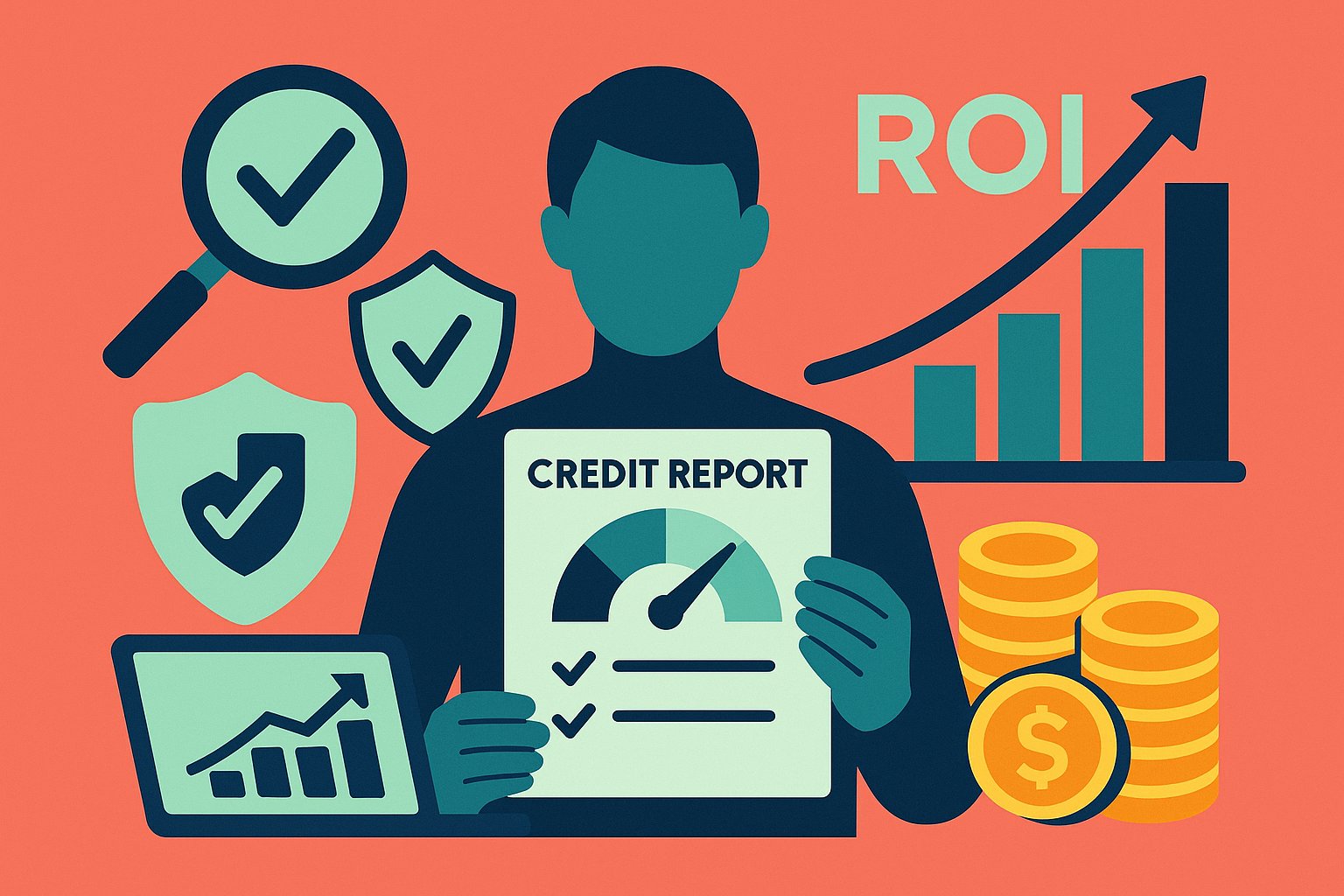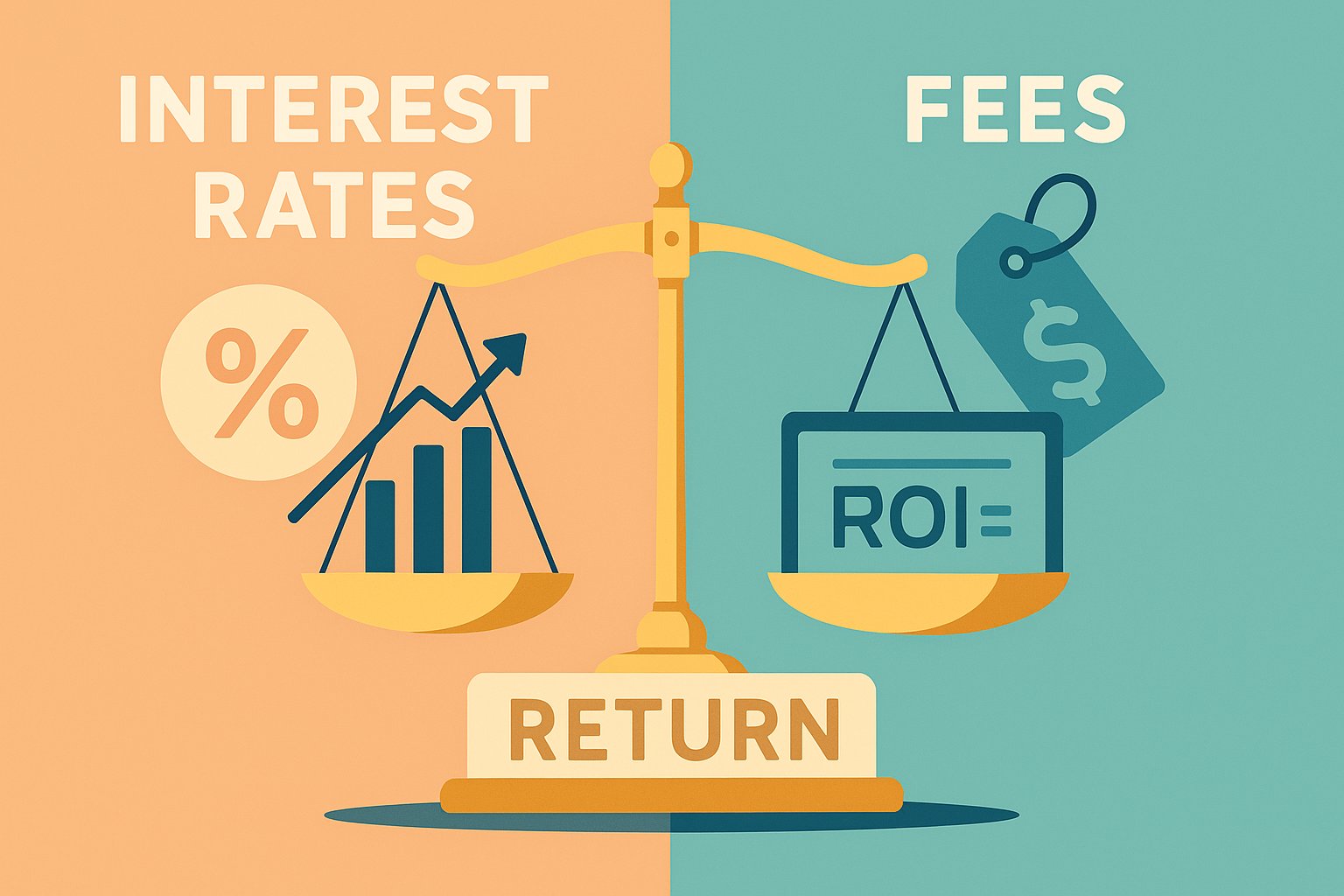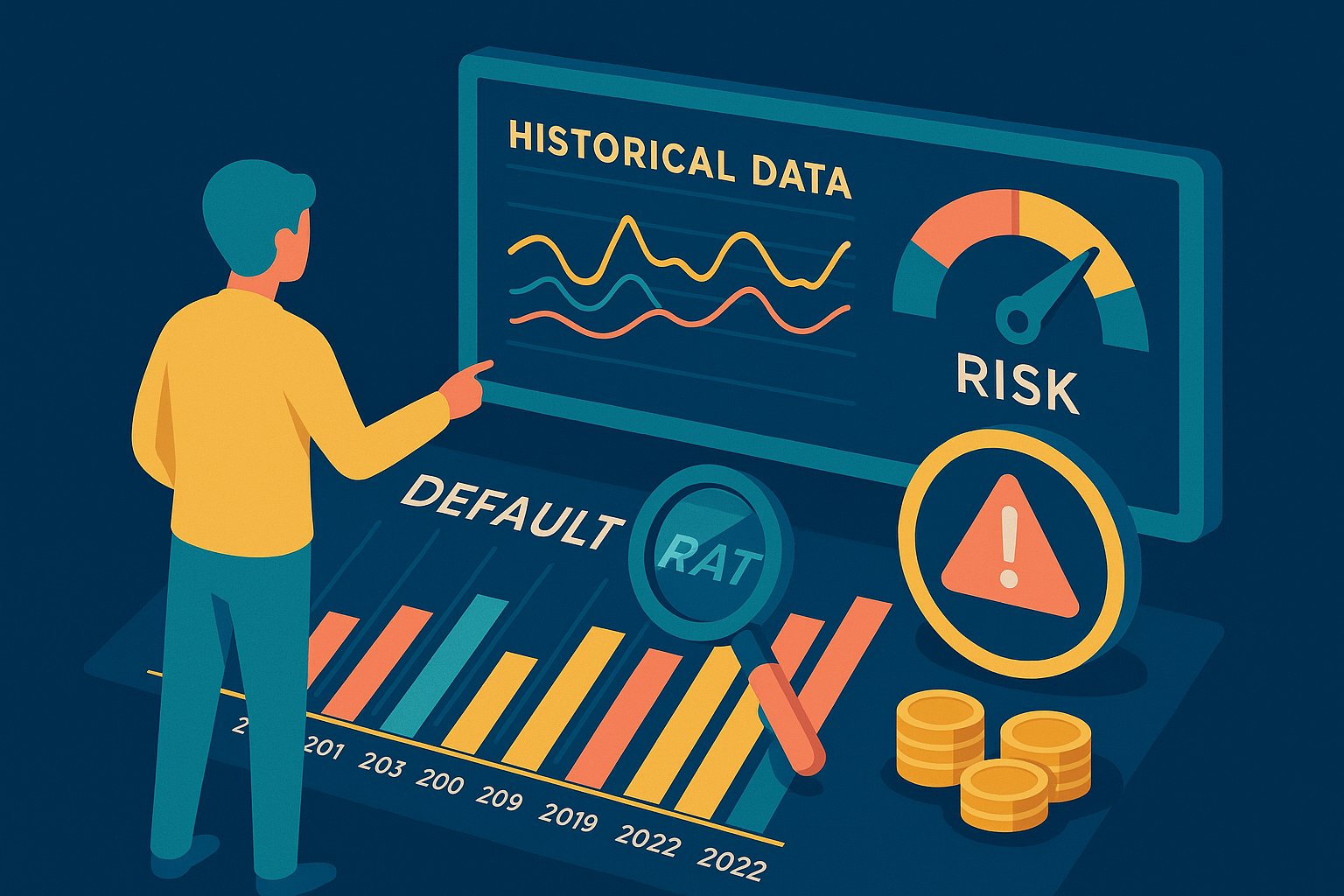Understanding the ROI Impact of Creditworthiness
When you invest in debt-based crowdfunding or peer-to-peer lending, your return on investment (ROI) hinges largely on the quality of the borrowers you choose. A borrower’s creditworthiness directly correlates to their ability to repay, which in turn influences default rates, recovery costs, and ultimately, your bottom line. While headline interest rates may look compelling on paper, only a meticulous evaluation of creditworthiness can reveal the true risk-adjusted ROI. In today’s competitive lending environment, borrowers come from diverse backgrounds—small business owners seeking capital for expansion, entrepreneurs launching innovative ventures, or individuals consolidating existing debt. Each profile carries its own set of red flags and green lights, and knowing which factors to prioritize is the keystone of building a resilient portfolio.
Before diving into individual indicators, it’s essential to recognize that creditworthiness is not a monolithic concept; it comprises multiple intertwined components. Credit scores, payment histories, income stability, employment trajectories, existing debt obligations, and even industry trends all play pivotal roles. While platforms often assign a single credit grade or letter—designed to capture borrower quality at a glance—experienced investors dig deeper. They treat these grades as a starting point, drilling down into the granular data that underpins them. By doing so, investors uncover nuances that may lead to higher yields or cautionary alarms. In this comprehensive guide, we’ll explore each aspect of creditworthiness, illuminating how to interpret data, spot emerging risks, and optimize your ROI through informed decision-making.
The Power of a Credit Score Deep Dive
At the heart of creditworthiness lies the credit score, a numerical synthesis of a borrower’s historical repayment behavior. While many lenders gravitate toward FICO or VantageScore benchmarks, savvy investors go beyond the final three-digit tally. They examine recent score fluctuations, trends over time, and factors that contributed to the current rating. A score that dipped due to a one-off medical emergency might not carry the same long-term risk as a score battered by chronic late payments. By requesting an updated credit report from bureaus—Equifax, Experian, and TransUnion—investors can pinpoint inconsistencies or hidden delinquencies that automated underwriting models might have overlooked.
Furthermore, understanding how credit scoring works empowers investors to interpret scores contextually. Payment history constitutes roughly 35 percent of a FICO score, meaning even two late payments can shave off significant points. Credit utilization—the ratio of outstanding balances to credit limits—represents about 30 percent, signaling how heavily a borrower leans on revolving credit. Length of credit history, new inquiries, and credit mix fill out the rest of the equation. When you analyze these subcomponents, you gain insights into whether a borrower’s low score stems from recent mismanagement or a short credit history. This level of granularity sharpens your ROI forecasting, allowing you to assign weight to potential recovery efforts and interest rate premiums accordingly.
Beyond the Score: Parsing Credit Reports
While credit scores serve as convenient proxies, the full credit report provides a panoramic view of borrower behavior. Within these reports lie detailed line items: payment records, account balances, collections, bankruptcies, and public records like tax liens. Seasoned investors pore over this information, identifying patterns that surface beneath the surface numbers. For instance, a borrower may have multiple closed accounts with zero balances—a sign of responsible debt payoff—yet still carry a few active high-utilization credit cards. Recognizing such distinctions helps differentiate between a borrower with disciplined repayment habits and one merely juggling debt consolidation.
Credit reports also reveal the borrower’s credit inquiries—both hard and soft pulls. A sudden spike in hard inquiries suggests aggressive borrowing or liquidity stress, potentially signaling higher default risk. Investors use this clue to explore why the borrower sought additional credit: Was it to seize a lucrative opportunity, or to patch a short-term cash flow gap? Moreover, derogatory marks, such as collections accounts or charge-offs, prompt immediate scrutiny. Rather than dismissing a borrower outright, an investor may analyze the recency and resolution status of these marks. A paid-off collection from two years ago, for example, carries less weight than a recent default still in collections. By parsing credit reports with a critical eye, you root out nuances that can significantly affect ROI projections.
Income Stability: A Cornerstone of Repayment Risk
While credit history paints a picture of past behavior, income stability offers a glimpse into future repayment capacity. Lenders typically request recent pay stubs, tax returns, and bank statements to verify consistency of income. For salaried employees, two to three consecutive pay stubs can validate steady earnings. For self-employed borrowers, profit-and-loss statements, business bank deposits, and fully filed tax returns reveal revenue trends and expense fluctuations. In either scenario, investors look for declination patterns or abrupt changes: a shift from a high-paying position to gig work, seasonal dips in business revenue, or irregular deposit patterns that may underscore underlying volatility.
Investors also weigh the borrower’s debt-to-income (DTI) ratio, which measures how much of their gross income goes toward servicing existing debt. A DTI below 36 percent typically indicates sustainable borrowing behavior, while a DTI above 43 percent may trigger caution. However, DTI numbers alone can be misleading; investors contextualize them by examining the nature of the debt. Mortgage payments and auto loans might be deemed more stable than high credit card balances carrying exorbitant interest. A borrower might have a DTI of 45 percent due to a sizable mortgage, yet possess exceptional rental income that offsets risk. By digging into income sources, investors adjust their ROI calculations to reflect true repayment capacity, rather than relying on raw percentages.
Employment and Financial Journey: Tracing Reliability
Beyond pay stubs and bank statements, the trajectory of a borrower’s employment history speaks volumes. Lenders prefer candidates with at least two years of continuous employment, as it implies stable income and company loyalty. A borrower who hops between jobs every few months—or toggles between sectors entirely—may be more susceptible to economic downturns or industry-specific layoffs. In such cases, investors may require compensation in the form of higher interest rates or additional collateral, if available. On the flip side, a legal professional who recently left a high-paying firm for solo practice might present a strong strategic vision but also a temporary dip in income. By exploring context, investors distinguish between entrepreneurs building businesses and job seekers facing precarious markets.
Furthermore, financing journeys often reveal critical inflection points: a borrower may have started with an entry-level position earning modest wages but recently leveraged a skill upgrade or advanced degree to secure a promotion. That upward mobility can translate into future repayment potential. Investors that actively engage with borrowers—asking about career progression plans and long-term financial goals—gain a richer understanding of the risk-return profile. When you align employment insights with historical repayment data, you position yourself to forecast ROI with greater precision, selecting borrowers whose trajectories suggest resilient earnings.
Analyzing Debt-to-Income Ratios for True Leverage
While DTI ratios originally serve to gauge borrower leverage, they also illuminate pockets of opportunity. A borrower with a modest DTI but high disposable income might warrant a slightly lower interest rate, since their repayment cushion is more substantial than raw percentages indicate. Conversely, a borrower with multiple small-dollar obligations—credit cards, personal lines of credit, subscription services—can conceal liquidity stress despite a reasonable DTI on paper. Investors often request itemized debt schedules that detail minimum payments, interest rates, and maturities of each obligation. Such schedules reveal mismatches: for instance, a 4 percent student loan alongside 18 percent credit card debt. Consolidating high-interest balances might lower risk, but could also delay repayments through elongated terms. By modeling different repayment scenarios, you determine whether a borrower’s DTI truly reflects sustainable leverage or if hidden pressures lurk beneath the surface.
Scrutinizing Payment Histories: Stories Behind the Numbers
When borrowers consistently pay bills on time, they send a message of discipline and reliability. Payment history typically accounts for the largest portion of a credit score, but investors look beyond the aggregate punctuality rate. They examine the cadence of payments: did the borrower consistently miss due dates around major holidays or tax deadlines? Do multiple accounts show simultaneous payment lags, possibly signaling a broader cash flow crunch? Conversely, early payments—paying weeks before the due date—indicate proactive financial management and may justify a premium allocation even if the borrower’s score is middling.
Beyond quantitative patterns, qualitative nuances emerge. Delinquency due to medical emergencies, for example, may prompt investors to accept a brief lapse, provided subsequent history demonstrates correction. However, repeated late payments that coincide with recent increases in credit utilization might suggest dependency on revolving credit to fund lifestyle needs. By scrutinizing the stories behind payment timestamps, investors calibrate ROI expectations with real-world repayment behavior, moving beyond blanket assumptions to a personalized risk assessment.
The Role of Collateral and Guarantees in Strengthening Confidence
Although many debt crowdfunding platforms offer unsecured loans, some borrowers pledge collateral—real estate, equipment, or other tangible assets—to secure their obligations. Collateral acts as a safeguard, allowing investors to recuperate a portion of losses if defaults occur. While the presence of collateral doesn’t guarantee repayment, it provides an additional fallback mechanism. Investors appraise the quality, liquidity, and current market value of pledged assets, ensuring they align with the outstanding loan balance. A healthy “loan-to-value” (LTV) ratio—often capped at 80 percent for real estate—limits the risk of depressed property values eroding collateral worth.
Personal guarantees further fortify confidence. When a business owner co-signs a small business loan with their personal assets at stake, the incentive to repay intensifies. In the event of default, lenders may pursue collections through the borrower’s personal equity—a process that, while sometimes protracted, heightens the likelihood of recovery. Investors factor in the complexity of legal proceedings and local jurisdiction rules when evaluating guarantee enforceability. By weighing collateral and guarantee provisions alongside credit scores and income data, you assemble a multi-layered risk mitigation strategy that shields ROI even if borrower performance falters.
Industry and Market Context: Evaluating Sector-Specific Risks
No borrower exists in a vacuum; their industry and wider market dynamics can dramatically affect repayment likelihood. A restaurant owner applying for a short-term operating loan must weather fluctuations in consumer spending, supply chain disruptions, and seasonal headwinds. In contrast, a medical billing service—characterized by recurring payment streams from insurers—exhibits more predictable cash flows. Investors parse macroeconomic indicators, competitor landscapes, and regulatory trends when assessing industry-specific risk. During an economic downturn, consumer discretionary sectors might experience higher delinquency rates, whereas essential services maintain relative stability.
Historical performance data by sector can guide ROI projections. Platforms often publish aggregate default rates by industry category—retail, healthcare, technology—allowing you to calibrate expected losses accordingly. Additionally, investors might engage external data sources—industry reports, news trackers, and economic forecasts—to anticipate potential headwinds. If a borrower operates in an industry facing emerging regulatory scrutiny—such as cryptocurrency or alternative lending—investors may adjust credit models to reflect heightened uncertainty. By embedding industry context into credit assessments, you fine-tune ROI estimates and avoid concentration risks tied to cyclical or volatile sectors.
Tools and Technology: Leveraging Data for Sharper Insights
Evaluating borrower creditworthiness used to involve manual spreadsheet juggling and phone calls, but today’s investors have an arsenal of digital tools at their disposal. Automated underwriting systems can rapidly aggregate credit report data, income verification documents, and bank statement patterns, delivering instant risk scores that complement platform-provided ratings. Some advanced platforms employ machine learning models to detect subtle default indicators—like atypical payment behaviors or anomalies in transaction volumes—that traditional credit metrics might miss. Meanwhile, portfolio management software helps investors track loan performance, reconcile payments, and visualize ROI through dynamic dashboards.
Embracing these technologies not only accelerates due diligence but also reduces human error. By inputting borrower information into robust analytics engines, you generate risk heat maps that highlight high-risk clusters in your portfolio, prompting timely rebalancing. Data-driven insights also inform secondary market decisions—identifying underperforming notes that warrant sale at a discount versus those that merit close monitoring. However, technology is a tool, not a substitute for critical thinking. The most successful investors blend automated data crunching with qualitative judgment, using human intuition to interpret anomalies and apply contextual expertise. By integrating cutting-edge tools with old-fashioned diligence, you elevate your ability to evaluate creditworthiness and amplify ROI.
Building a Balanced Portfolio: Diversification Meets Due Diligence
No matter how diligently you evaluate individual borrowers, a single default can still occur. Diversification remains the bedrock of any robust debt crowdfunding strategy. By spreading capital across multiple loans—varying credit grades, industries, geographic regions, and loan terms—you dilute the impact of any one borrower’s misfortune. However, diversification should not come at the expense of due diligence. Rather than reflexively selecting loans solely based on credit grade, investors curate a mix of high-quality borrowers to anchor the portfolio and riskier loans with commensurate yield premiums to boost returns.
Striking this delicate balance means setting allocation caps—perhaps no more than 5 percent of total capital in any single loan and limiting exposure to higher-risk credit grades to a defined percentage. Regular portfolio reviews help reallocate funds as certain loans mature or default. By combining rigorous borrower evaluation with disciplined diversification, you forge a portfolio that weathers economic storms and strives for consistent, attractive ROI over time.
Elevating Your Investing Edge Through Ongoing Monitoring
Creditworthiness isn’t static; borrowers’ financial lives evolve. A new job, unexpected medical bills, or a sudden drop in revenue can alter repayment capacity at any moment. The most successful debt-based crowdfunding investors maintain an ongoing monitoring regimen—periodically reviewing payment performance, credit score updates, and news alerts that may signal looming risks. When early warning signs emerge—missed payments, legal disputes, or industry headwinds—investors act swiftly. They may offload at-risk notes on secondary markets, negotiate modified payment schedules, or escalate collections efforts in collaboration with platform servicers.
Beyond reactive measures, proactive communication with borrowers can forestall default. A simple outreach—clarifying whether financial relief is needed or exploring repayment alternatives—can foster cooperation rather than confrontation. This hands-on approach not only rescues individual loans but also enriches your understanding of evolving creditworthiness criteria. Over time, the data and insights you collect refine your risk models, guiding more accurate borrower evaluations and improving ROI forecasting. By committing to continuous monitoring, you transform creditworthiness assessment from a one-time event into a dynamic process that underpins sustainable, superior returns.




